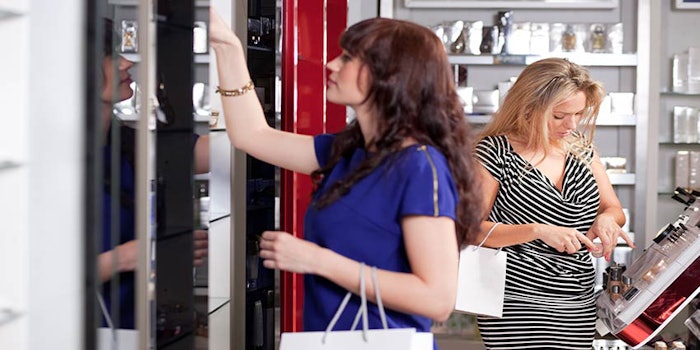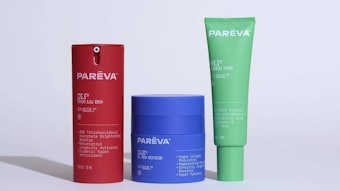
We’ve all heard the saying "no guts, no glory," but before your brand stands the glorious chance of showing up on a retail shelf, you’ve got to think critically and act strategically. There are three critical steps every brand manager, marketing director or CEO can take to help your brand stand out to retailers elevate its chances of succeeding with buyers. And it all starts with the meeting.
Further reading: Non-traditional Strategies on the Road to Retail.
1. Get the meeting.
We can all agree that successful brands don’t just happen by chance. Securing the extremely hard-to-get retailer meeting can seem a little like finding a needle in a haystack: impossible. However, with the right mix of talent on your team, it doesn’t have to be that way.
Hands down, the most essential part of this equation is working with someone who has the relationships and knowledge to get buyers and retailers to sit up and pay attention to you and your brand.
At this level, it’s not enough to simply know the names of the merchant or buyer.
It’s all fine and well if you already know the buyers you want to target, or have their contact information. But guess what? Most likely, so does the next brand.
Buyers receive countless emails, phone calls and packages from brands, which are all hoping to forge the connection that gets them a meeting and, ultimately, lands them a coveted spot on the retail shelf.
At this level, it’s not enough to simply know the names of the merchant or buyer. With hundreds of brands competing for the buyer’s attention, your brand needs to sing—and sing loudly!
I like to relate securing a retailer to picking a real estate agent.
It helps to hire a stellar consultant who has intimate knowledge and rooted relationships, knows how to engage the buyer, and understands the intricacies of followup and follow-through without a) irritating the buyer and b) coming across as pushy, arrogant or worse…needy.
I see this often—brands overcompensate to get the buyer’s attention. Whether it’s sending a lavish gift or a small token such as flowers or a fruit basket, it’s unlikely these efforts will convince her to pick up the phone or snag you a meeting.
Believe it or not, buyers have seen nearly every kind of “attention getter” gift, and trying to buy your way in just doesn’t work.
“Why hasn’t anyone else picked up this brand?”
I like to relate securing a retailer to picking a real estate agent. Sure, you can list your home as "for sale by owner" and forgo using an agent, but you put yourself at risk. A skilled real estate agent can minimize the amount of time your home sits on the market, which is critical because, as we all know, the longer a house takes to sell, the more people start to wonder, “What’s wrong with this home?”
The same theory applies to your brand. The longer you are without retail distribution and your products sit in warehouse with thousands of units inching closer to their expiration date, the greater the risk that a buyer will wonder, “Why hasn’t anyone else picked up this brand?”
2. Button Up Your Branding
As every entrepreneur knows, preparation is a fundamental part of success, which is why it is essential to ensure your key brand assets are buttoned up before your meeting. These assets must resonate with your target customer and, importantly, be created with an eye toward the particular considerations of your preferred retail environment.
At the end of the day, the buyer wants to know how will this brand sell and what makes it different. So get your creative branding in order, particularly your story. As much as possible, keep your story simple and take the complicated out of complicated.
Buyers are the eyepiece of their consumers, and they consider every new item brought onto the selling floor through the lens of their shoppers.
Next, refine your positioning and elevator pitch: why your brand and how is it different?
Also, review your brand photography, which needs to relay your brand’s personality and story in mere seconds and without words. Finally, review your website and social media strategy—successful brands know that strong consumer engagement is the key to long-term success.
These are just a few mission critical deliverables, which are important to fine-tune well before your meeting. Remember, buyers are the eyepiece of their consumers, and they consider every new item brought onto the selling floor through the lens of their shoppers, which means they will be asking hard questions about your products. Your brand assets need to provide those answers.
An outside perspective help identify holes or gaps in your branding.
Finally, surround yourself with an expert team. As the entrepreneur or owner behind the brand, sometimes it’s easy to become too close to your story and lose sight of how to best share it. Which is why it pays to bring in outside resources.
Work with a design agency to create compelling graphics and to lay out all of your presentations. Then find a great writer to tell your story. Not only will an outside perspective help identify holes or gaps in your branding (yes, they are there), an independent overview of all your branding elements gives you a watered-down version of the interaction you can expect from a buyer, only with the luxury of time to correct issues vs. having a buyer point them out.
3. Dress Up & Show Up
There are as many opinions on what makes a winning retail presentation as there are beauty brands. But we can all agree that your buyer presentation needs to be an attention-getter. I like to say that it should scream like a rock star, yet be engaging; it should get to the point, yet tell your story fully.
So what should be included in your rock-star retail presentation? Start with taglines and imagery, which are the little snippets, or windows, to your brand that excite the audience, and compel and drive them to action.
The brand story that you spent so much time crafting and getting just right also belongs in your retail presentation, as well your products: their ingredients and benefits.
Buyers like to see claims because it proves an already built-in interest in the product by the ones who ultimately matter the most: consumers.
Anything else different or intriguing about where your brand originated should be included as well, including a founder’s research, a special region of the world where you sourced a key active or a pivotal need your product meets that no other product does.
You are also going to want to highlight your website, editorial and press coverage, and any social media efforts/channels. Buyers like to see an established presence in all these areas, if you have it. If you don’t, then share your plans for how you are going to get there: website build-out progress, and any plans for PR and social media implementation.
Finally, if you have them, be sure to include results from any consumer claims or product testing programs. Not only do consumer claims appeal to consumers (and increase their interest in purchasing), buyers like to see claims because it proves an already built-in interest in the product by the ones who ultimately matter the most: consumers.
Bonus Step: Ace the Meeting
Gathering the right tools and materials for your retailer meeting is important, but to ace these critical meetings, you need to step into the room with an expert who knows retail and the buyer expectations and, more importantly, understands how to help create that instant love connection/a-ha moment between you and the retailer.
So, do your homework! Familiarize yourself with the retailer, their history and heritage, and their assortment and approach with consumers so you can seamlessly answer why your brand is a fit for their culture.
After all, even with all of the preparation prior to your meeting, it’s likely the buyer may ask for changes to any number of things you maybe hadn’t thought even mattered—but don’t panic. With the right attitude and partner, these distinctive nuances are a seamless step on your road towards retail success.
Mother, entrepreneur and experienced beauty retail leader, Lisa Adams is one of the most sought-after, must-have beauty connection and relationship builders in the industry. CEO of The Beauty Matchmakers, Adams is a forward-thinking retail strategist who secures esteemed beauty retail meetings and distribution for her clients. Using her close industry buyer relationships, Lisa is deeply attuned to the realities facing beauty brands hoping to enter the marketplace today. Namely, she understands the competition and how to stay relevant to buyers and consumers. She also specializes in helping her clients understand and prepare for these challenges from day one. Lisa has worked closely with global giants such as Nestlé and Kathy Ireland, as well as notable indie darlings such as Dr. Paul Nassif and Tao Clean. Adams' focus includes all beauty categories, including skin care, color cosmetics, hair care, bath and body, men’s grooming, fragrances, devices and beauty-focused ingestibles.










